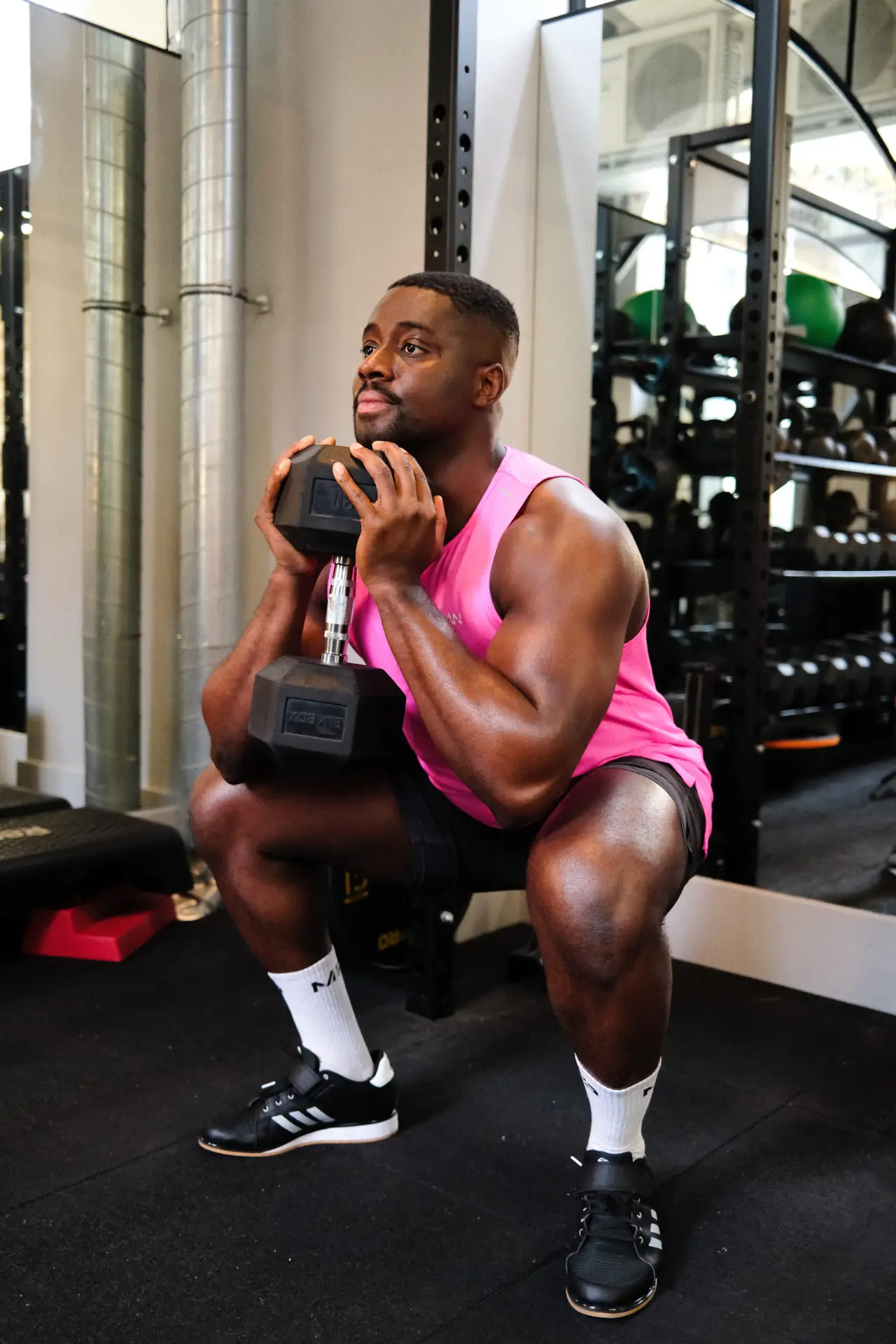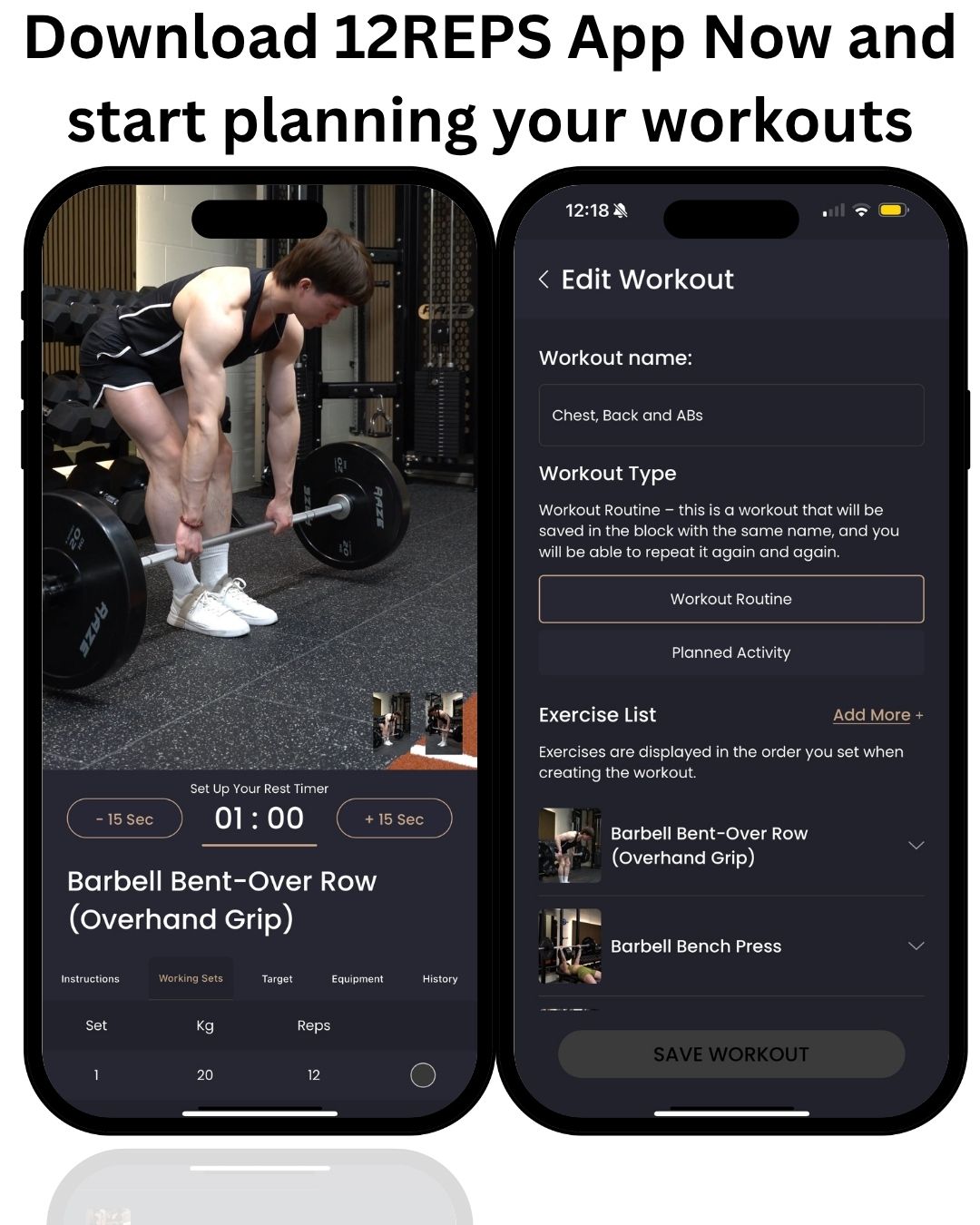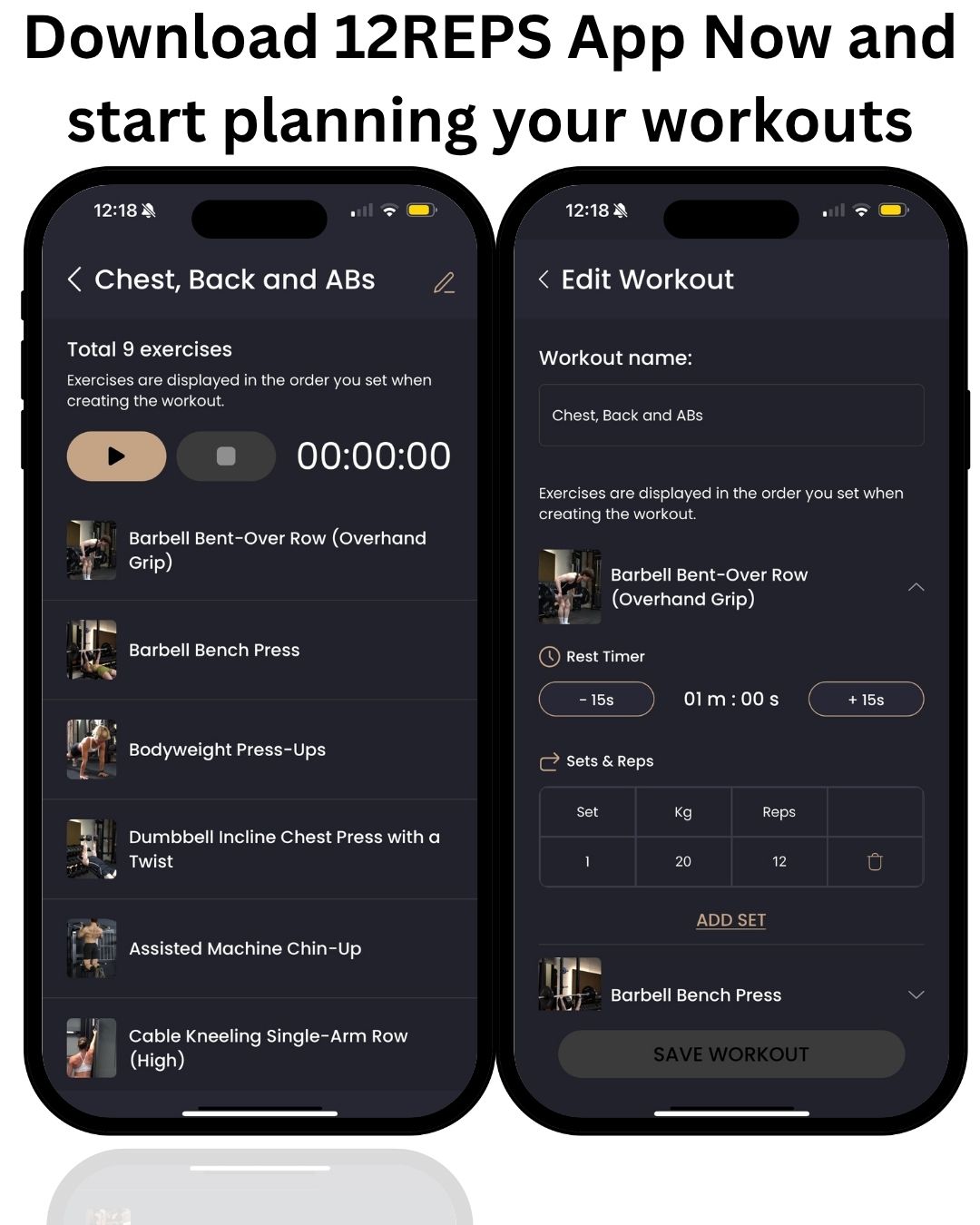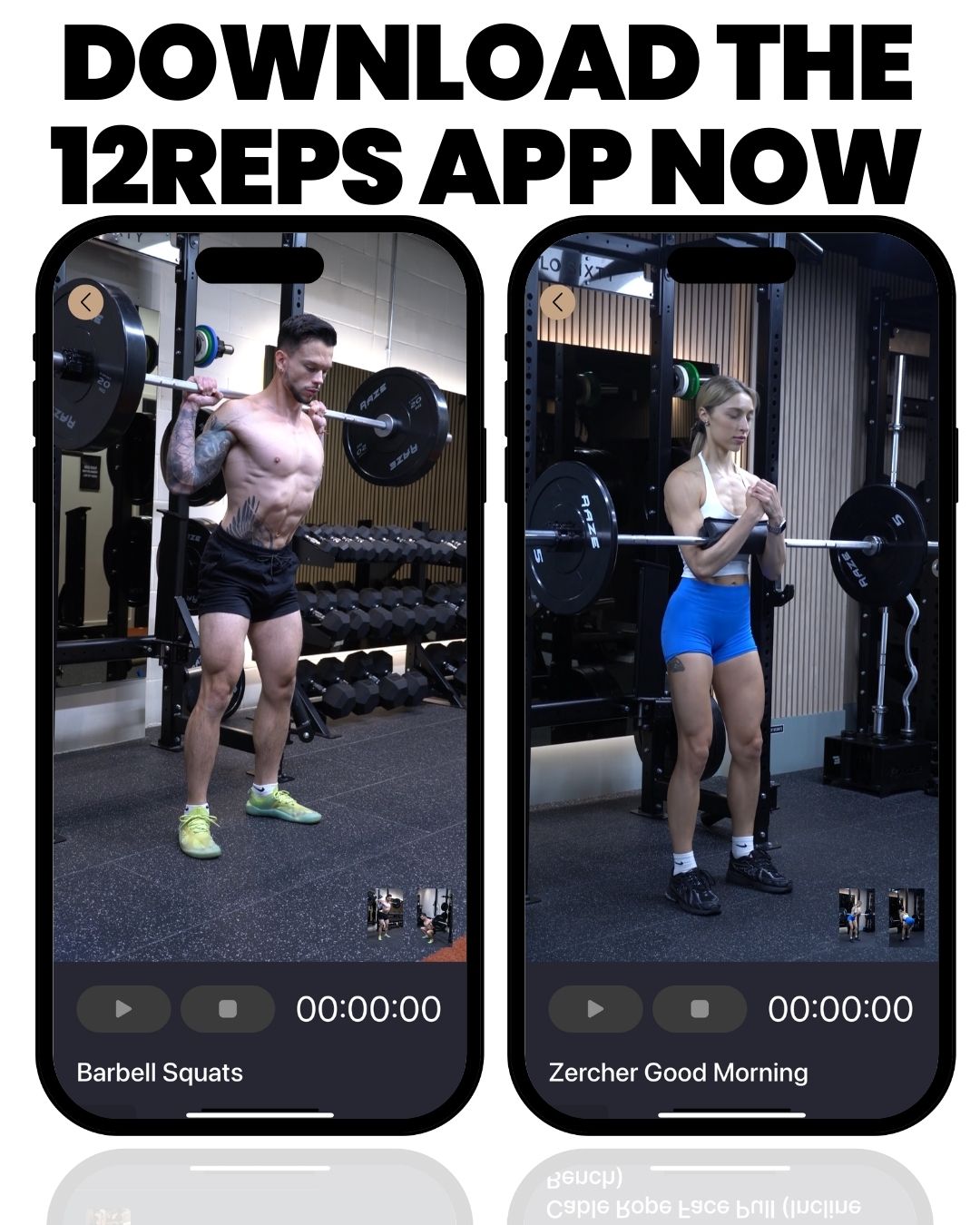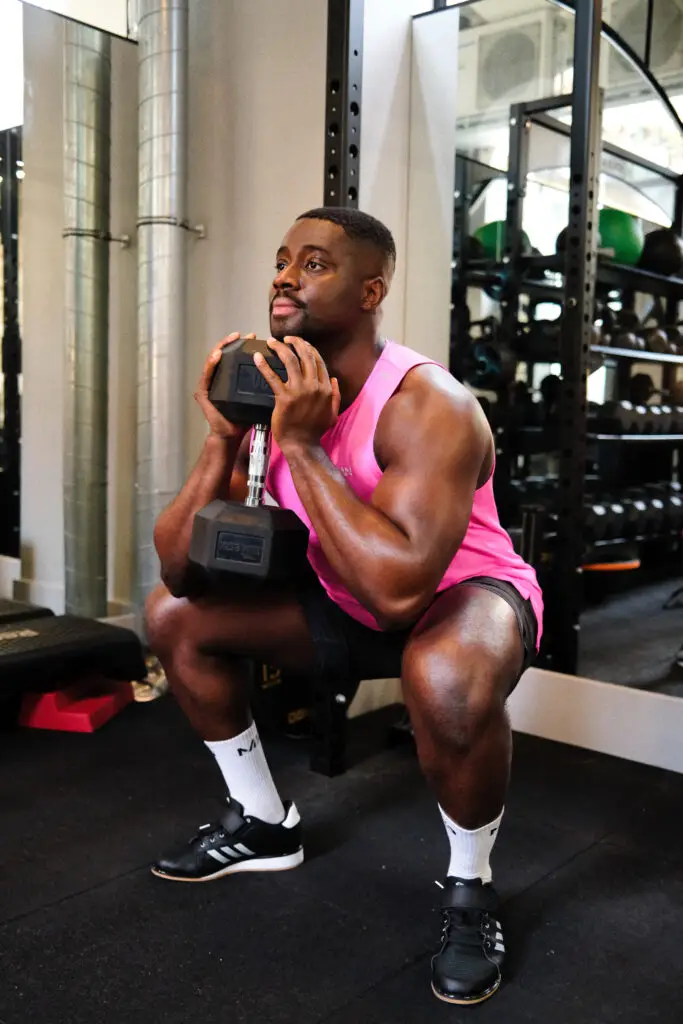One of the most common questions I get from new clients is “How many exercises should I do in each workout?” It’s a great question because getting this right can make the difference between an effective training session and one that leaves you either undertrained or completely exhausted. After over 10 years as a personal trainer, I’ve learned that the answer isn’t the same for everyone.
My name is Will Duru, and with a BSc (Hons) in Sport and Exercise Science and over a decade of experience as an award-winning personal trainer, I’ve designed thousands of workout programs for people at every fitness level. What I’ve discovered through both research and practical application is that the optimal number of exercises per workout depends on your experience level, training goals, and the type of workout you’re doing.
In this article, we’ll explore how to determine the right number of exercises for your workouts, break down recommendations by experience level and workout type, and I’ll share a complete 12-week program that you can follow. We’ll also discuss how modern tools like a personal trainer workout planner and tracker can help you optimise your exercise selection and track your progress effectively.

Choose your exercises directly on the 12reps app, available on the App Store.
Exercise Selection by Experience Level
The number of exercises you should include in your workout largely depends on your training experience and current fitness level. Research shows that beginners respond well to fewer exercises with higher focus on technique, while advanced trainees can handle more complex programs with greater exercise variety [1].
Beginners: 4-6 exercises
If you’re new to strength training, starting with 4-6 exercises per workout is ideal. This might seem low, but there are several important reasons for this approach. First, as a beginner, your primary focus should be on learning proper movement patterns and building a foundation of strength. Trying to do too many exercises can lead to poor form, increased injury risk, and mental overwhelm.
Beginners also have limited work capacity, meaning they fatigue more quickly and need more time to recover between exercises. Research indicates that untrained individuals can achieve significant strength and muscle gains with relatively low training volumes [1]. A typical beginner workout might include a squat variation, a push movement like push-ups, a pull movement like rows, and a core exercise. This covers all major movement patterns without overwhelming the nervous system.
The key for beginners is consistency and progression. It’s better to master 4-6 exercises and gradually increase the weight, repetitions, or difficulty than to constantly change exercises or try to do too many in one session. Using a muscle-building planner and tracker app, such as the 12REPS APP, can help beginners stay consistent and track their progress as they build strength and confidence.
Intermediate: 6-8 exercises
Once you’ve been training consistently for 6-12 months and have mastered basic movement patterns, you can increase to 6-8 exercises per workout. At this stage, your work capacity has improved, and you can handle more training volume while still recovering effectively.
Intermediate trainees can start incorporating more exercise variety to target muscles from different angles and prevent plateaus in adaptation. You might add isolation exercises to complement your compound movements, or include variations of basic exercises to continue challenging your body. For example, if you’ve mastered regular squats, you might add goblet squats or Bulgarian split squats to your routine.
This is also when you can start experimenting with different workout splits rather than just full-body routines. An upper/lower split or push/pull routine becomes more appropriate as you can dedicate more exercises to specific muscle groups while still allowing adequate recovery time.
Advanced: 8-12 exercises
Advanced trainees who have been training consistently for 2+ years can handle 8-12 exercises per workout. At this level, you have the work capacity, technical skill, and recovery ability to manage higher training volumes and more complex exercise selection.
Advanced programs often include multiple exercises for the same muscle group, targeting different angles and rep ranges to maximise muscle development. You might perform both barbell and dumbbell pressing movements in the same session, or include multiple pulling exercises to target different areas of the back.
However, even advanced trainees need to be strategic about exercise selection. More isn’t always better, and the focus should be on quality over quantity. Each exercise should have a specific purpose in your program, whether it’s building strength, adding muscle mass, improving weak points, or enhancing performance in specific movement patterns.
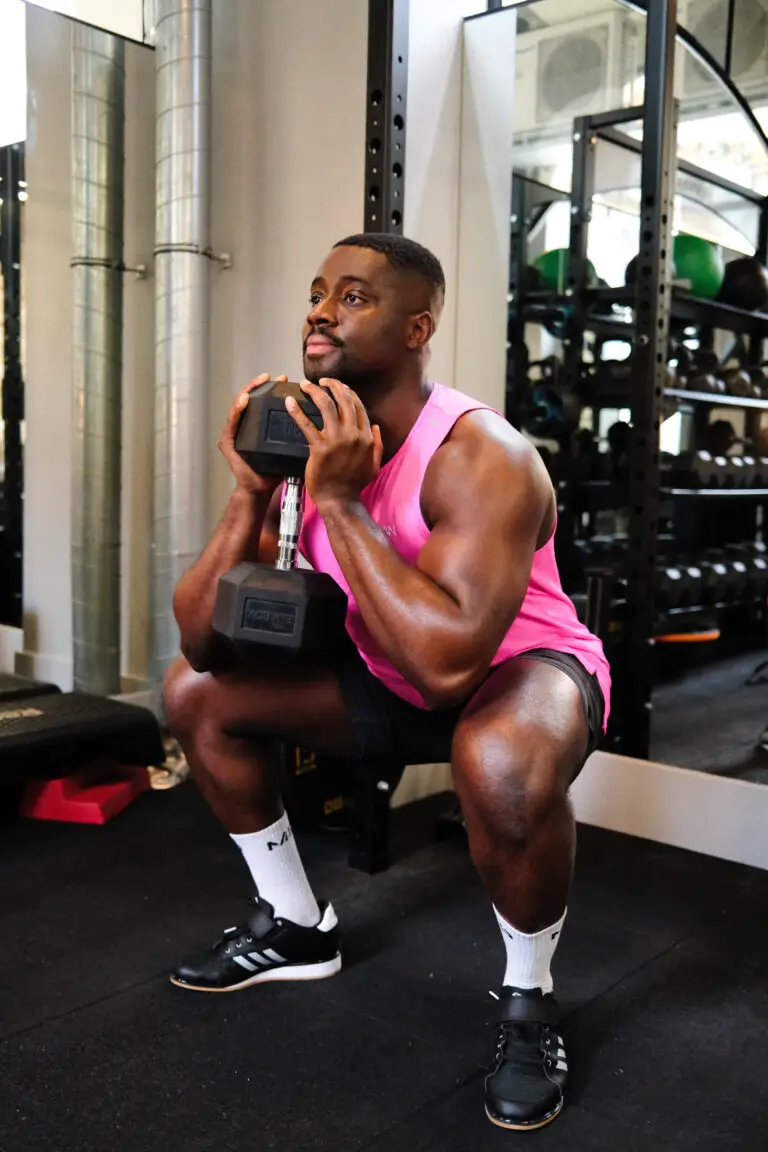
Exercise Count by Workout Type
The type of workout split you choose significantly impacts how many exercises you should include per session. Different splits allow for different training volumes and recovery patterns.
Full body: 6-8 exercises
Full-body workouts are designed to train all major muscle groups in a single session. This approach works well for beginners and intermediate trainees, as well as advanced trainees who have limited time for training. Research shows that full-body routines can be highly effective for both strength and muscle development when performed 2-3 times per week [1].
A typical full-body workout includes one exercise for each major movement pattern: squat, hinge (deadlift), push, pull, and core. You might also add a carry or conditioning exercise. This gives you 6-8 exercises that comprehensively train your entire body. The key is choosing compound movements that work multiple muscle groups simultaneously, maximising the efficiency of each exercise.
Full-body workouts require careful exercise selection because you need to balance training all muscle groups without creating excessive fatigue. This is where a personal trainer workout planner and tracker becomes invaluable, helping you ensure balanced muscle development and appropriate progression over time.
Upper/lower split: 4-6 exercises per session
Upper/lower splits divide your training into upper body and lower body sessions, typically performed 4 times per week (2 upper, 2 lower). This approach allows you to use fewer exercises per session while still achieving high training volumes for each muscle group.
Upper body sessions might include 4-6 exercises covering horizontal and vertical pushing and pulling movements, along with some arm work. Lower body sessions focus on squatting and hinging patterns, with additional exercises for glutes, calves, and core. This split works well for intermediate and advanced trainees who want to increase training volume without excessively long workout sessions.
The advantage of upper/lower splits is that you can dedicate more attention to each muscle group while still maintaining reasonable workout lengths. You can include both compound and isolation exercises without the session becoming overwhelming.
Push/pull/legs: 4-5 exercises per session
Push/pull/legs splits are popular among advanced trainees because they allow for high specialisation and training volume. Push sessions focus on the chest, shoulders, and triceps. Pull sessions target back and biceps. Leg sessions work the entire lower body.
With this level of specialisation, you can achieve excellent results with just 4-5 exercises per session. Each exercise can be more targeted since you’re only working specific muscle groups. This allows for higher training volumes per muscle group while keeping individual sessions manageable.
This split is typically performed 3-6 times per week, depending on your goals and recovery ability. The high frequency allows you to train each muscle group multiple times per week while using fewer exercises per session.

Barbell squats and barbell deadlift from the 12REPS APP.
12-Week Progressive Workout Program
Here’s a complete 12-week program designed for intermediate trainees, training 3 times per week. The program is divided into three 4-week phases with progressive overload built in.
Phase 1: Foundation (Weeks 1-4) Focus: Building base strength and movement quality
Week | Exercise | Equipment | Sets | Reps | Weight | Rest |
1-2 | Goblet Squat | Dumbbell | 3 | 12-15 | 15-25 lbs | 60s |
1-2 | Push-ups | Bodyweight | 3 | 8-12 | Bodyweight | 60s |
1-2 | Bent-over Row | Dumbbell | 3 | 10-12 | 15-25 lbs | 60s |
1-2 | Romanian Deadlift | Dumbbell | 3 | 10-12 | 20-30 lbs | 90s |
1-2 | Plank | Bodyweight | 3 | 30-45s | Bodyweight | 45s |
1-2 | Resistance Band Pull-aparts | Band | 2 | 15-20 | Light band | 30s |
3-4 | Goblet Squat | Dumbbell | 3 | 12-15 | 20-30 lbs | 60s |
3-4 | Push-ups | Bodyweight | 3 | 10-15 | Bodyweight | 60s |
3-4 | Bent-over Row | Dumbbell | 3 | 12-15 | 20-30 lbs | 60s |
3-4 | Romanian Deadlift | Dumbbell | 3 | 12-15 | 25-35 lbs | 90s |
3-4 | Plank | Bodyweight | 3 | 45-60s | Bodyweight | 45s |
3-4 | Resistance Band Pull-aparts | Band | 2 | 20-25 | Light band | 30s |
Phase 2: Development (Weeks 5-8) Focus: Increasing load and adding complexity
Week | Exercise | Equipment | Sets | Reps | Weight | Rest |
5-6 | Barbell Back Squat | Barbell | 4 | 8-10 | 65-75% 1RM | 90s |
5-6 | Dumbbell Bench Press | Dumbbell | 3 | 8-10 | 25-35 lbs | 75s |
5-6 | Barbell Row | Barbell | 3 | 8-10 | 65-85 lbs | 75s |
5-6 | Conventional Deadlift | Barbell | 3 | 6-8 | 70-80% 1RM | 120s |
5-6 | Kettlebell Swing | Kettlebell | 3 | 15-20 | 20-35 lbs | 60s |
5-6 | Dumbbell Shoulder Press | Dumbbell | 3 | 10-12 | 15-25 lbs | 60s |
5-6 | Side Plank | Bodyweight | 2 | 30-45s each | Bodyweight | 45s |
7-8 | Barbell Back Squat | Barbell | 4 | 6-8 | 70-80% 1RM | 90s |
7-8 | Dumbbell Bench Press | Dumbbell | 4 | 6-8 | 30-40 lbs | 75s |
7-8 | Barbell Row | Barbell | 4 | 6-8 | 75-95 lbs | 75s |
7-8 | Conventional Deadlift | Barbell | 3 | 5-6 | 75-85% 1RM | 120s |
7-8 | Kettlebell Swing | Kettlebell | 3 | 20-25 | 25-40 lbs | 60s |
7-8 | Dumbbell Shoulder Press | Dumbbell | 3 | 8-10 | 20-30 lbs | 60s |
7-8 | Side Plank | Bodyweight | 3 | 45-60s each | Bodyweight | 45s |
Phase 3: Intensification (Weeks 9-12) Focus: Peak strength and advanced techniques
Week | Exercise | Equipment | Sets | Reps | Weight | Rest |
9-10 | Barbell Back Squat | Barbell | 5 | 5-6 | 80-85% 1RM | 120s |
9-10 | Barbell Bench Press | Barbell | 4 | 5-6 | 80-85% 1RM | 90s |
9-10 | Pull-ups/Chin-ups | Bodyweight | 3 | 5-8 | Bodyweight/Assisted | 90s |
9-10 | Sumo Deadlift | Barbell | 4 | 4-5 | 80-90% 1RM | 150s |
9-10 | Bulgarian Split Squat | Dumbbell | 3 | 8-10 each | 20-30 lbs | 60s |
9-10 | Dumbbell Incline Press | Dumbbell | 3 | 8-10 | 25-35 lbs | 75s |
9-10 | Resistance Band Face Pulls | Band | 3 | 15-20 | Medium band | 45s |
9-10 | Turkish Get-up | Kettlebell | 2 | 3-5 each | 15-25 lbs | 90s |
11-12 | Barbell Back Squat | Barbell | 5 | 3-5 | 85-90% 1RM | 120s |
11-12 | Barbell Bench Press | Barbell | 5 | 3-5 | 85-90% 1RM | 90s |
11-12 | Pull-ups/Chin-ups | Bodyweight | 4 | 6-10 | Bodyweight/Weighted | 90s |
11-12 | Sumo Deadlift | Barbell | 4 | 3-4 | 85-95% 1RM | 150s |
11-12 | Bulgarian Split Squat | Dumbbell | 3 | 6-8 each | 25-35 lbs | 60s |
11-12 | Dumbbell Incline Press | Dumbbell | 3 | 6-8 | 30-40 lbs | 75s |
11-12 | Resistance Band Face Pulls | Band | 3 | 20-25 | Medium band | 45s |
11-12 | Turkish Get-up | Kettlebell | 3 | 5-8 each | 20-30 lbs | 90s |
Optimising Exercise Selection with a Personal Trainer Workout Planner
Modern technology has revolutionised how we approach workout programming and exercise selection. A quality personal trainer, workout planner, and tracker can help you optimise your training in ways that weren’t possible just a few years ago.
Use the 12reps app
The 12reps app represents the cutting edge of workout planning technology. This muscle-building planner and tracker app goes beyond simple exercise logging to provide intelligent programming recommendations based on your goals, experience level, and progress. The app analyses your workout history and suggests optimal exercise selection, rep ranges, and progression schemes.
What sets the 12reps app apart is its ability to learn from your training patterns and adapt recommendations accordingly. If you’re consistently struggling with a particular exercise or movement pattern, the app can suggest alternatives or modifications. If you’re progressing faster than expected, it can recommend more challenging variations or increased training loads.
The app also integrates seamlessly with various fitness tracking devices, allowing for comprehensive monitoring of your training stress, recovery status, and overall progress. This data-driven approach takes the guesswork out of exercise selection and ensures you’re always training at the optimal intensity for your current fitness level.
Exercise variety tracking
One of the most valuable features of modern workout tracking apps is their ability to monitor exercise variety over time. Research shows that varying exercise selection can significantly influence muscle hypertrophy and strength gains [2]. However, it’s easy to fall into routines and stick with the same exercises week after week.
A good personal trainer, workout planner, and tracker will alert you when you’ve been using the same exercises for too long and suggest variations to keep your training fresh and effective. This might mean progressing from bodyweight squats to goblet squats to barbell squats, or rotating between different pressing angles to ensure balanced muscle development.
The app can also track which muscle groups you’ve been emphasising and which might be getting neglected. This is particularly important for people who design their own workouts, as it’s common to unconsciously favour certain exercises or movement patterns while neglecting others.
Muscle group balance
Maintaining balanced muscle development is crucial for both performance and injury prevention. A quality workout tracking app monitors the volume and frequency of training for each muscle group, ensuring you’re not creating imbalances that could lead to problems down the road.
The app can provide visual feedback showing your training distribution across different muscle groups over various time periods. If you notice you’ve been doing a lot of pushing exercises but neglecting pulling movements, you can adjust your upcoming workouts to restore balance.
This feature is particularly valuable for people following split routines, where it’s easy to lose track of overall training balance when focusing on specific muscle groups in individual sessions.
Progressive exercise introduction
One of the biggest challenges in workout programming is knowing when and how to introduce new exercises. A sophisticated muscle-building planner and tracker app can suggest exercise progressions based on your current strength levels, movement quality, and training goals.
For example, the app might recommend progressing from assisted pull-ups to bodyweight pull-ups to weighted pull-ups based on your performance metrics. Or it might suggest adding single-leg exercises once you’ve demonstrated proficiency in bilateral movements.
This progressive approach ensures you’re constantly being challenged while minimising injury risk. The app can also provide video demonstrations and coaching cues for new exercises, making it easier to learn proper technique without needing constant supervision from a personal trainer.
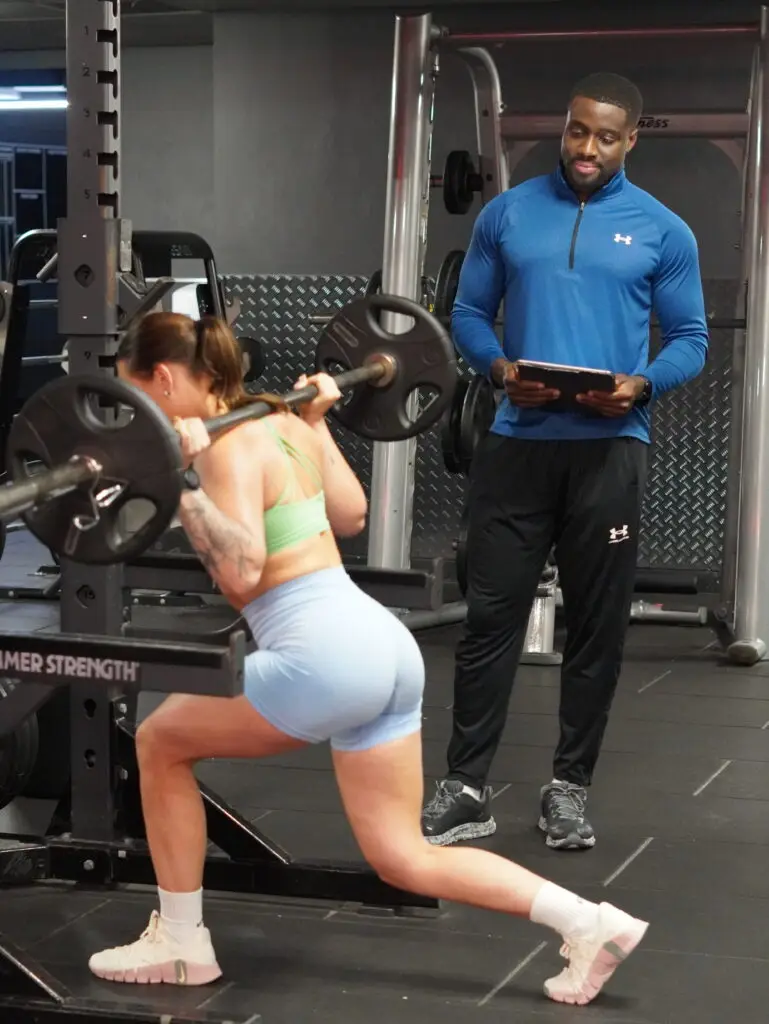
Conclusion
The optimal number of exercises per workout isn’t a one-size-fits-all answer. It depends on your training experience, goals, available time, and the type of workout split you’re following. Beginners should start with 4-6 exercises focusing on fundamental movement patterns, while advanced trainees can handle 8-12 exercises with greater variety and specialisation.
The key is to choose exercises that align with your goals and current abilities and then progress systematically over time. Whether you’re doing full-body workouts with 6-8 exercises or specialised splits with 4-5 exercises per session, consistency and progressive overload are more important than the exact number of exercises.
Modern tools, such as the 12reps app and other personal trainer workout planner and tracker systems, can significantly enhance your training by providing intelligent exercise selection, tracking muscle group balance, and suggesting appropriate progressions. These tools take much of the guesswork out of program design and help ensure you’re always training optimally for your current fitness level.
Remember that the best workout program is the one you can stick to consistently. Start with an appropriate number of exercises for your experience level, focus on proper form and progressive overload, and use technology to help optimise your training over time. With patience and consistency, you’ll see steady progress regardless of whether you’re doing 4 exercises or 12.
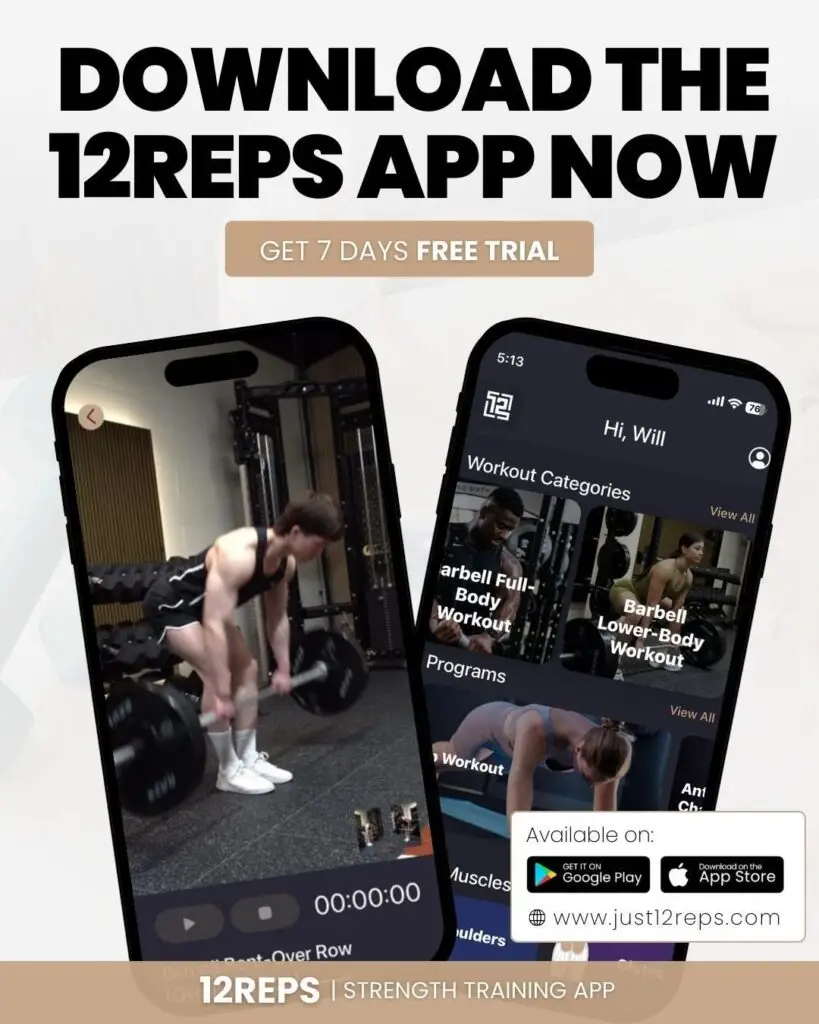
References
[1] Iversen, V. M., Norum, M., Schoenfeld, B. J., & Fimland, M. S. (2021). No Time to Lift? Designing Time-Efficient Training Programs for Strength and Hypertrophy: A Narrative Review. Sports Medicine, 51(10), 2079-2095. https://pmc.ncbi.nlm.nih.gov/articles/PMC8449772/
[2] Kassiano, W., Costa, B., Kunevaliki, G., Soares, D., Zacarias, G., Manske, I., … & Cyrino, E. S. (2022). Does Varying Resistance Exercises Promote Superior Muscle Hypertrophy and Strength Gains? A Systematic Review. Journal of Strength and Conditioning Research. https://pubmed.ncbi.nlm.nih.gov/35438660/

